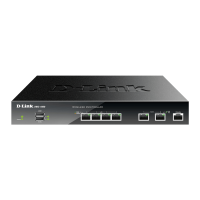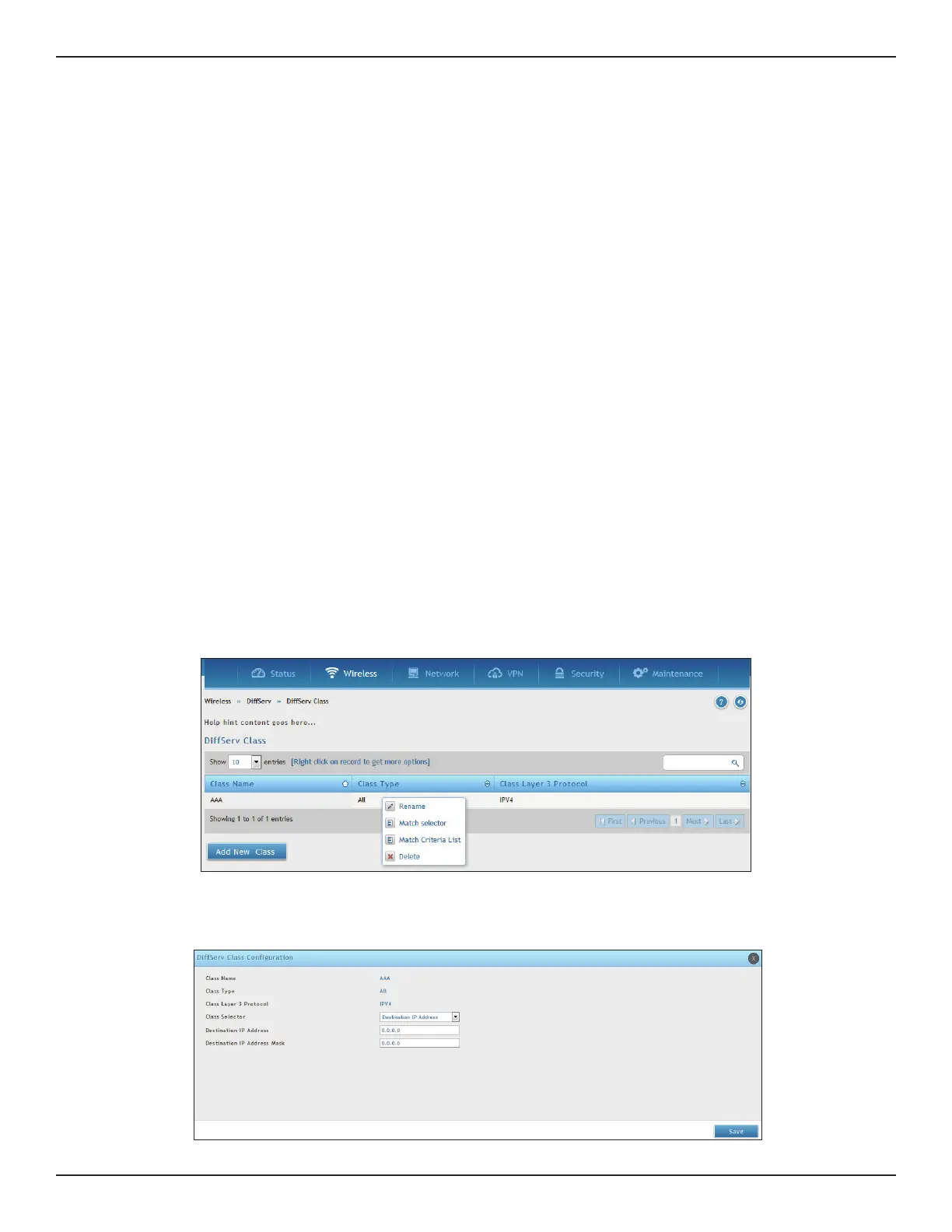D-Link DWC-1000 User Manual 86
Section 4 - Advanced WLAN Conguration
DiServ
The QoS feature contains Dierentiated Services (DiServ) support that allows trac to be classied into streams
and given certain QoS treatment in accordance with dened per-hop behaviors. To use DiServ for QoS, the web
pages accessible from the Dierentiated Services menu rst be used to dene the following categories and their
criteria:
1. Class: Create class and dene class criteria
2. Policy: Create policies, associate classes with policies, and dene policy statements.
3. Service: Add a policy to an inbound interface.
Packets are classied and processed based on the dened criteria. The classication criteria is dened by a class.
The processing is dened by a policy’s attributes. Policy attributes may be dened on a per-class instance basis,
and it is these attributes that are applied when a match occurs. A policy can contain multiple classes. When the
policy is active, the actions taken depend on which class matches the packet.
Packet processing begins by testing the class match criteria for a packet. A policy is applied to a packet when a
class match within that policy is found.
DiServ Class
Path: Wireless > DiServ > DiServ Class
DiServ Class and Class Conguration pages are used to add a new DiServ Class name, or to rename or delete
an existing class. This feature allows the user to dene the criteria to associate with a DiServ Class. As packets
are received, these DiServ Class is used to prioritize packets.
The elds available on the Class Conguration page depend on whether you create a new class or congure
a class that has already been created.

